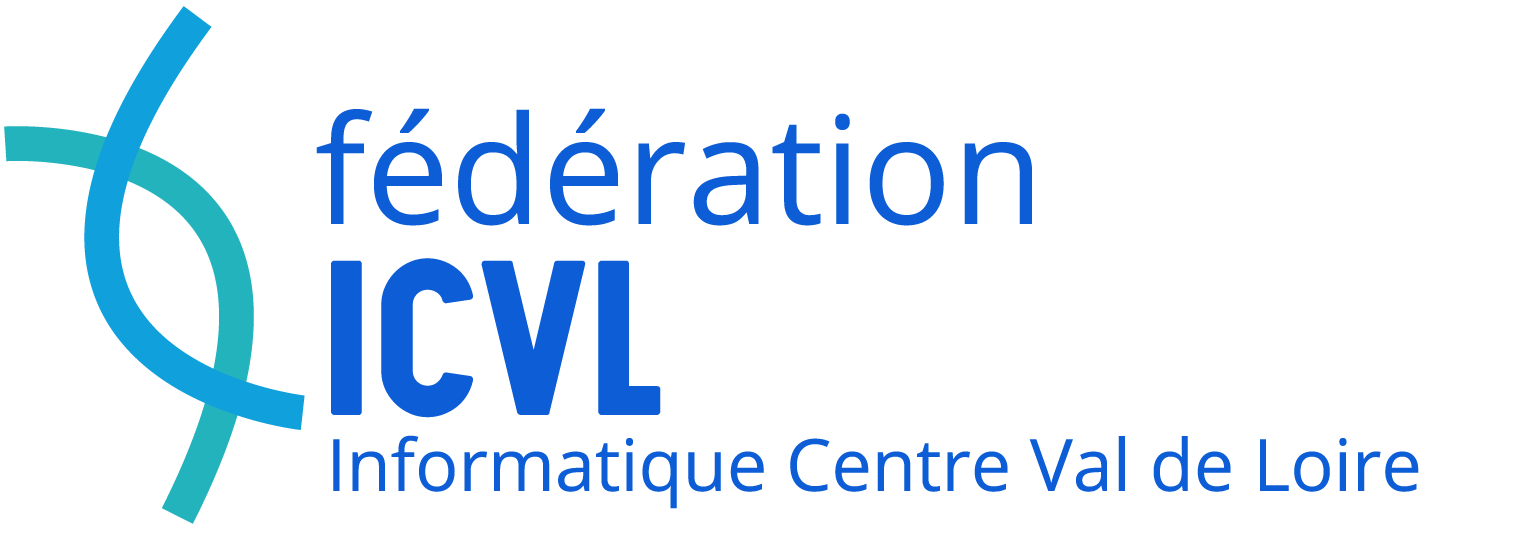JIRC 2018: Journée Informatique de Région Centre
JIRC are yearly workshops gathering the LIFO and the LIFAT laboratories. Since 2015 they are organizd by the ICVL federation.
The 2018 edition will take place on Thursday, 29 November 2018 at the LIFAT (see the directions):
- Laboratoire d'Informatique Fondamentale et Appliquée de Tours
- Polytech'Tours
- 64 avenue Jean Portalis, 37200 Tours
- LIFAT, Amphi Turing
Program
| 8:55-9:00 | Welcome | ||||||
| 9:00-9:15 | Opening, ICVL news | ||||||
| 9:15-10:15 | (session 1, session chair: Béatrice Markhoff) Keynote: Alessandro Mosca: UNiCS: An ontology-mediated open data platform for Research and Innovation | ||||||
| 10:15-10:45 | (session 2, session chair: Laurent Bobelin) International collaboration: Agung Alfiansyah: Anonymat et d'imagerie médicale | ||||||
| 10:45-11:15 | coffee break | ||||||
| 11:15-12:15 | (session 3, chair: Sébastien Limet) Recent joint work connected to ICVL-funded topics
| ||||||
| 12:15-12:45 | (session 4, chair: Benjamin Nguyen) Computer science & multidisciplinarity
| ||||||
| 12:45-14:15 | Lunch (salle Ada Lovelace) | ||||||
| 14:15-15:15 | (session 5, chair: Donatello Conte) Keynote: Luc Brun Graph edit distance: A short panorama of historical and more recent methods | ||||||
| 15:15-16:15 | (session 6, chair: Nicolas Ragot) Computer science & multidisciplinarity
| ||||||
| 16:15-17:00 | Convivial networking discussion on multidisciplinary aspects of computer science |
Keynote speakers
-
Alessandro Mosca, SIRIS LAB, Barcelona, Spain
UNiCS: An ontology-mediated open data platform for Research and Innovation
Abstract
Research and Innovation (R&I) ecosystems involve data and knowledge flows across enterprises, academia, funding institutions, public authorities and citizens. Key R&I data elements are currently dispersed across a multitude of distinct and heterogeneous datasets; they are often neither in structured format nor systematically shared. Designing policies that affect R&I dynamics, and monitoring their impact in time, are tasks which require to overcome the limitations imposed by the usage of separated data silos, and to provide meaningful, integrated access to data with the appropriate granularity. In such a context, Ontology-Mediated Data Management (OMDM) can help bringing together inputs and outcomes from a variety of sources, in an open and interoperable fashion. The talk introduces UNiCS, an ontology-mediated platform for Research and Innovation open data management. The OMDM approach is meant to ease the access to a vast amount of heterogeneous data, offering the final users the means for formulating queries in the domain knowledge vocabulary the experts are familiar with. In UNiCS, each original query gets transformed into a set of optimised queries to different data sources, thanks to a core component called -ontop-. Together with a short introduction of the main components of the platform, a list of real application scenarios will be introduced, showing the main benefits of following the OMDM principles and methods in the case of R&I data management, but also the limitations we experienced in developing them and the issues that still remain to be solved.CV
Alessandro Mosca joined SIRIS Lab, the Research Division of SIRIS Academic, in 2014. His main research interests include: knowledge representation and reasoning (KR&R), non-classical and hybrid modal logics, formal ontology, ontologies, and theoretical foundations of conceptual modelling and databases. Since 2010 to 2013, he has been Assistant Professor at the KRDB Research Centre at the Faculty of Computer Science of the Free University of Bozen-Bolzano. He studied Philosophy in Milano and did his master's thesis on modal logic representations of first-order quantification. He holds a Master's Degree in Computer Science for Humanities from the University of Milano-Bicocca, and a PhD in Computer Science from the same university. He has been a Postdoc researcher at the Department of Computer Science, Systems, and Communication in Milano-Bicocca for five years, working on KR formalisms based on non-classical logics. -
Luc Brun, GREYC, Université Caen Normandie, Caen, France
Graph edit distance: A short panorama of historical and more recent methods
Abstract
Defining a metric between objects is a basic step of any pattern recognition algorithm. Using graphs, this notion of distance is not straightforward. Among the different distances between graphs that one may imagine, the Graph Edit Distance has progressively become a standard tool within the structural pattern recognition framework. Indeed, this distance allows to take into account fine differences between graphs, may be easily tuned and may satisfy all the axioms of a distance. Basically, the most common definition of the graph edit distance is based on the notion of edit path. An edit path between two graphs G1 and G2 is a sequence of node/edge removal/substitution or insertion operations transforming G1 into G2. Each edit path may be associated to a cost hence defining the Graph Edit Distance between G1 and G2 as the minimal cost of all edit paths between these two graphs. Within this survey, we will first review some definitions and properties of the Graph Edit Distance in order to set up a framework which will allow us to review the main families of methods used to compute the graph edit distance. Among them, we may cite methods based on a tree search or methods based on interger programming.CV
Luc Brun got his Ph.D. in Computer Science in 1996. Since 2004, he is the Professor in Computer Science at ENSICAEN. He is currently serving as chairman of the membership committee of International Association for Pattern Recognition (IAPR) and is the head of NormaSTIC research federation in close collaboration with Stéphane Canu (co-chair). His research interest concern structural pattern recognition and segmentation with applications in chemo/bio informatics, video analysisa and shape recognition.
Registration
Please, fill in the registration form by Thursday 22 November at latest.Organisation committee
- Mirian Halfeld Ferrari (LIFO, Orléans)
- Christelle Grange (LIFAT, Tours)
- Jean-Yves Ramel (LIFAT, Tours)
- Agata Savary (LIFAT, Blois)
- Annie Simon (LIFAT, Tours)

![[logo: LIFO]](./images/logo-lifo.png)
![[logo: LIFAT]](./images/logo-lifat.jpg)
![[logo: UO]](./images/logo-univ-orleans.jpg)
![[logo: UFRT]](./images/logo-univ-tours.jpg)
![[logo: INSA CVL]](./images/logo-insa.jpg)